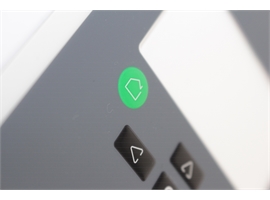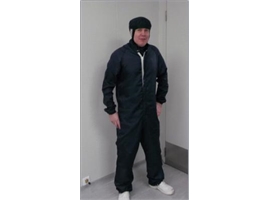Download Print Friendly Version: English Russian Italian
How to Guide - Printing Better windows
Synopsis...
How To Guide To Printing Better Windows
This simple How To Guide will show you the best way to print high quality windows using Windotex Gloss and Windotex Antiglare lacquers onto the range of Autotex textured polyester films from MacDermid Autotype.
Objective – How to reliably print, high clarity windows which have excellent adhesion and scratch resistance, with well defined edges and no orange peel, contamination or other faults.
Recommendations
Frames - It is critical that the mesh releases from the ink film immediately after the squeegee passes, so high tension stretching (> 20N/cm) onto a rigid metal frame is required. Autotype 2- Part Screen adhesive will hold the high mesh tensions that are required and will not slip when exposed to Autosolve cleaning solvents.
Mesh - Always choose the highest quality polyester mesh for Windotex printing, as even minor variations in weave quality can show up in the print. Select a 90/cm monofilament PET mesh for Autotex Fine, Velvet and Steel and either a 90/cm or 120/cm mesh for Autotex Softouch. The mesh must be totally clean and free from all ghost images before the stencil is made. Always use Universal Mesh Prep or Auto Degreaser Concentrate to ensure the best stencil adhesion possible and use Autokleen Plus to remove any mesh staining if the screen has been used before.
Stencils - Windotex windows are typically line or block images, so stencil resolution is not critical, however to create a cleanly defined edge a high quality stencil such as Capillex 35 is perfect. The high EOM and low Rz of the Capillex 35 stencil will ensure good edge definition. If a lower print shoulder is required, select Capillex 25, or for less critical applications, use PLUS 1-SR or PLUS 7000 photostencil emulsions.
Printing – In order to get the best adhesion to Autotex, the sheets must be printed within 48 hours after removing them from the original packaging (Autotex Softouch within 24 hours). If Autotex is left unwrapped for longer periods, the surface will ‘air off’ which reduces the adhesion between the Windotex and the textured surface. Therefore, the Windotex image must always be printed first, or second in the print sequence.
IMPORTANT: Only handle Windotex lacquer in a UV-free environment and it is critical to thoroughly stir Windotex for a minimum of 2 minutes prior to printing in order to produce fully scratch resistant windows.
Print using a 65 shore Polyurethane squeegee at a low pressure and a fast speed for best results. Air bubble generation during printing can be more of a problem when using a coarse mesh, if so, reduce the print speed gradually. When setting up Autotex Steel jobs for printing, ensure that the grain is in the print direction as this will help the Windotex lacquer to fill the grain structure effectively.
The most common reasons for poor clarity of windows are caused by too thin, or too thick print thickness and/or inadequate surface levelling. The recommended print thickness for Windotex is 15-20 microns above the film surface. Always use a coating thickness gauge to accurately determine the ink film thickness.
If there is insufficient coverage using the recommended mesh, then a coarser one may be selected. Note: it is not advisable to try and increase the print thickness by printing a second layer of Windotex as the interlayer adhesion may be poor.
After printing, the wet lacquer should ideally be allowed to "flow out" before curing. However flowing out increases the risk of introducing dust into the print and can even lead to the edges slurring if the print edge is thick. But (provided the thickness is correct) it is the most useful step to improve the clarity of the window as it reduces mottle.
How To minimise dust contamination
Dust is impossible to remove from the cured Windotex print, therefore prevention is always better than contamination!
- Remove any contamination from the dry screen prior to printing with a low tack roller
- If the print room is not a ‘clean room’, then create a cleaner environment around the press by curtaining. This will also enable you to increase the relative humidity (RH) to reduce static build up during printing. An extractor hood will be required for local exhaust
- The operators should wear clean room clothing
- Always clean the substrate prior to printing using a low tack roller or machine
- Try to restrict personnel movement in the area during printing
- Place tack mats around the press
- Cover the screen during stoppages or remove the lacquer
Never return unused lacquer to the pot
Curing - Windotex can be cured on most conventional high intensity UV curing units. A minimum curing dose of 500 – 700 mj/cm² is required to harden the lacquer, a higher dose will give even better scratch resistance.
Cleaning - press wash: If the screen needs to be cleaned during printing, use Autosolve Press Wash AF and allow the mesh to dry out completely before recommencing printing.
Cleaning - archiving: If the screen is to be archived for reuse, the screen can be cleaned with either Autosolve Press wash AF40 or Autosolve Press Wash AF55 as these solvents do not contain emulsifying agents which could leave a residue.
Cleaning - decoating: If the stencil is to be decoated, use Autosolve Industrial AF which is a water washable screen cleaning solvent.
Stencil removal - Ghost images in the mesh can cause shadow marks in the print, therefore to get the best results use Autostrip stencil stripper followed by Autokleen Plus, low caustic haze remover.
Our range of products for printing perfect windows
|
Window lacquers |
Windotex Gloss & Antiglare |
|
Hard coated films |
Autotex Fine, Velvet, Steel and Softouch |
|
Mesh adhesive |
Autotype 2-part Screen Adhesive |
|
Mesh degreasers |
Universal Mesh Prep & Degreaser Concentrate |
|
Photostencil films |
Capillex 25 & 35 |
|
Photostencil Emulsions |
PLUS 1-SR & 7000 |
|
Press wash solvents |
Autosolve Press Wash AF, AF40 & AF55 |
|
Screen wash solvents |
Autosolve Industrial AF |
|
Stencil stripper |
Autostrip |
|
Haze remover |
Autokleen Plus |






